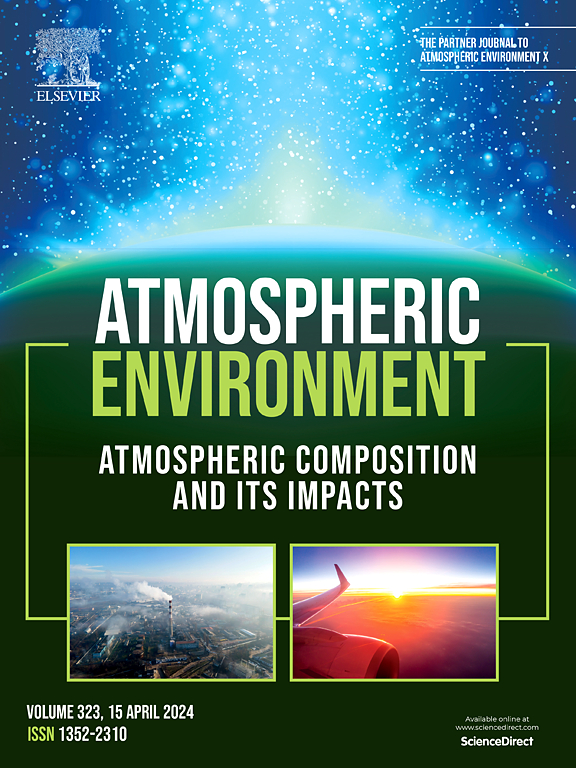Machine learning-enabled estimation and high-resolution forecasting of atmospheric VOCs
IF 3.7
2区 环境科学与生态学
Q2 ENVIRONMENTAL SCIENCES
引用次数: 0
Abstract
Atmospheric volatile organic compounds (VOCs) are crucial to reducing air pollution, which has adverse effects on human health. However, VOCs estimation and forecasting has been limited by insufficient observational data and complex interactions with other pollutants. Here, we developed machine learning models to estimate regional VOCs distributions and produce hourly distribution maps for the next 24 h with a 1 km resolution. Combining VOCs observations from monitoring sites, along with meteorological, emission, geographical and other related variables, we successfully employed a space-time LightGBM model to estimate VOCs concentrations from 2019 to 2021 and created a high-resolution uninterrupted VOCs dataset in Shanghai. Using this dataset, we evaluated the forecasting performance of three machine learning models and one deep learning model, finding that LightGBM outperformed other models. The models demonstrated substantial efficacy, with R2 values ranging from 0.527 to 0.938 and MAE values between 41.5 and 126 ppb, indicating significant performance in both temporal and spatial scales. With developed models, we provided first high-resolution hourly VOCs prediction maps in Shanghai, providing valuable insights for control strategy formulation in advance. This study also offers a novel tool for VOCs forecasting, with the developed model being adaptable to other regions experiencing high VOCs levels.
大气挥发性有机化合物的机器学习估计和高分辨率预测
大气挥发性有机化合物(VOCs)对减少对人类健康有不利影响的空气污染至关重要。然而,VOCs的估计和预测受到观测数据不足和与其他污染物复杂相互作用的限制。在这里,我们开发了机器学习模型来估计区域VOCs分布,并以1公里的分辨率生成未来24小时的小时分布图。结合各监测点VOCs观测数据,结合气象、排放、地理等相关变量,采用时空LightGBM模型估算了2019 - 2021年上海市VOCs浓度,建立了高分辨率连续VOCs数据集。使用该数据集,我们评估了三个机器学习模型和一个深度学习模型的预测性能,发现LightGBM优于其他模型。模型的R2值在0.527 ~ 0.938之间,MAE值在41.5 ~ 126 ppb之间,在时间和空间尺度上均表现出显著的效果。通过开发的模型,我们首次提供了上海市高分辨率逐时VOCs预测图,为提前制定控制策略提供了有价值的见解。该研究还为VOCs预测提供了一种新的工具,该模型适用于其他VOCs高水平地区。
本文章由计算机程序翻译,如有差异,请以英文原文为准。
求助全文
约1分钟内获得全文
求助全文
来源期刊

Atmospheric Environment
环境科学-环境科学
CiteScore
9.40
自引率
8.00%
发文量
458
审稿时长
53 days
期刊介绍:
Atmospheric Environment has an open access mirror journal Atmospheric Environment: X, sharing the same aims and scope, editorial team, submission system and rigorous peer review.
Atmospheric Environment is the international journal for scientists in different disciplines related to atmospheric composition and its impacts. The journal publishes scientific articles with atmospheric relevance of emissions and depositions of gaseous and particulate compounds, chemical processes and physical effects in the atmosphere, as well as impacts of the changing atmospheric composition on human health, air quality, climate change, and ecosystems.
 求助内容:
求助内容: 应助结果提醒方式:
应助结果提醒方式:


